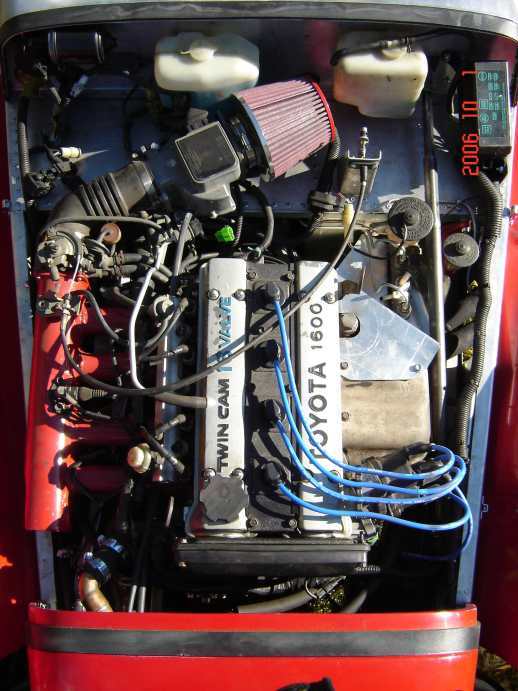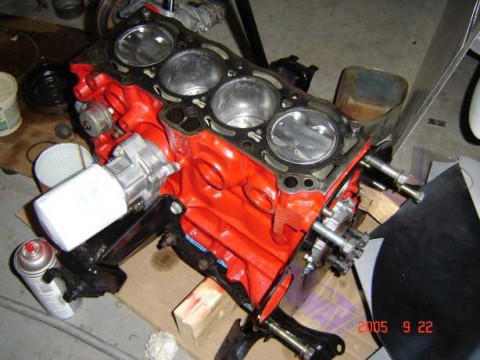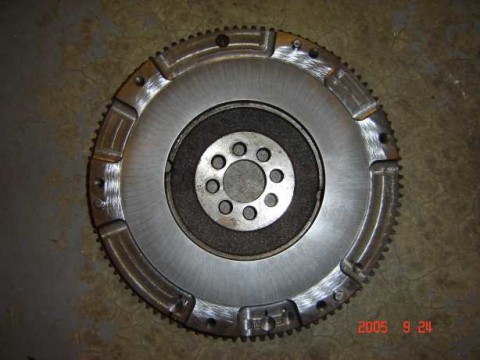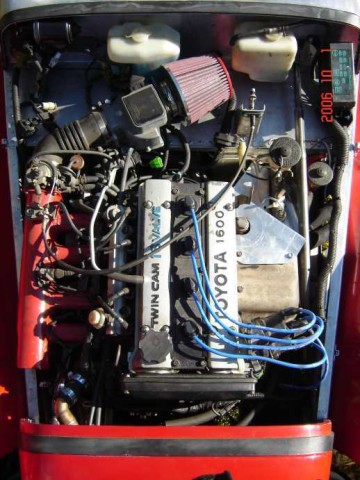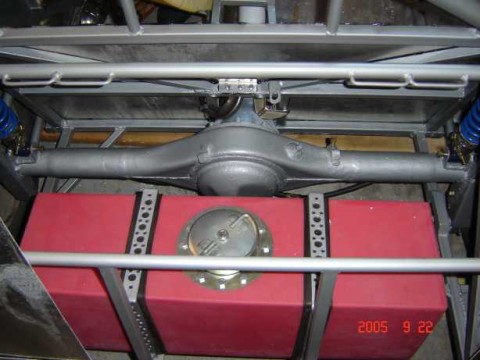Body Chassis Drivetrain |
Electrical Interior MegaSquirt |
First Drive Racing Media Daily Driving |
Overview
I used the entire drivetrain from an ’86 Toyota Corolla GT-S. This included the 4AGE engine and T-50 transmission. The engine was rebuilt, and the rear axle and transmission have had only seals and worn parts replaced.
Engine
The Corolla had 325,000kms on it. Compression was 100-80-90-65 psi. There was no ring ridge in the motor, however there was evidence of the engine having been significantly overheated. The rest of the engine looked very good.
The inside of the engine block was deburred to improve oil drainback. The cylinder head had already been milled when the previous owner replaced a blown headgasket (as a result or cause of the overheating).
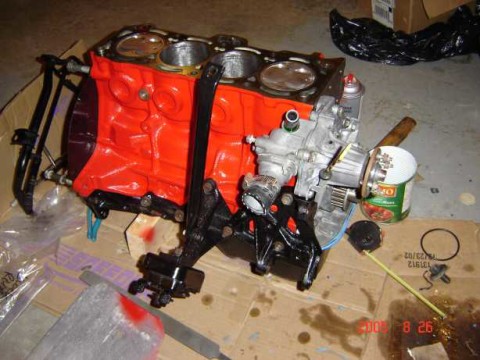
Engine was in good shape; new rings bearings and seals
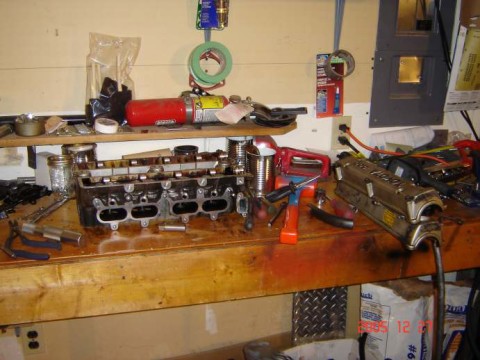
“Big port” head received a good cleaning and fresh seals
The flywheel was lightened by Liam Burr. Weight was removed from the outside edges front and back, was re-machined and re-balanced.
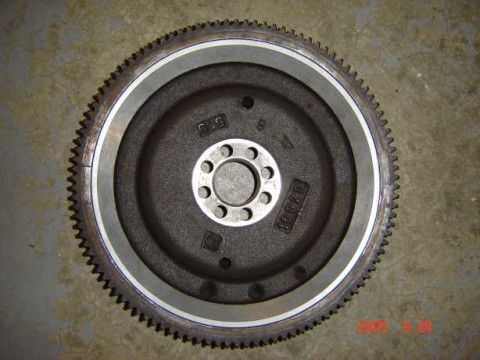
3lbs removed by Liam Burr, resurfaced and balanced
Once I had the head reassembled and installed, I found that the oil filler cap would not fit under the hood. I milled the cap tower down about 13mm, and then machined the oil cap thinner and just fits now.
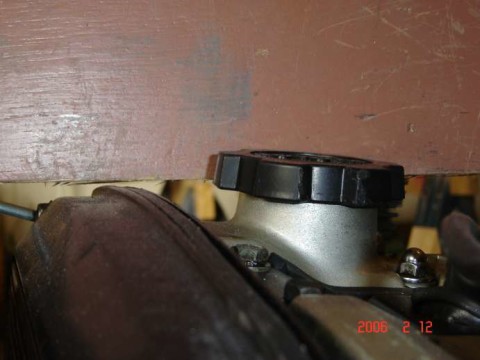
Oil fill tower and cap are too tall – where’s the Bridgeport?
Of course, the 4A-GE intake manifold didn’t fit under the hood, so I had to make my own. SDSefi.com has a good tutorial on how to make a manifold. I made my own dies to shape the port inletsand to make velocity stacks. Intake is made largely out of exhaust tubing. Flat section in the middle of the plenum is for the cold-start injector. Throttle body was also moved to the rear of the engine.
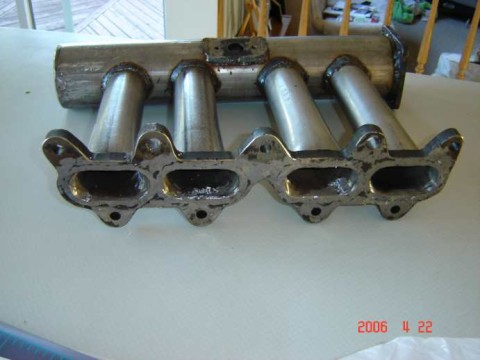
My own intake. Runner area equals both TVIS runner areas.
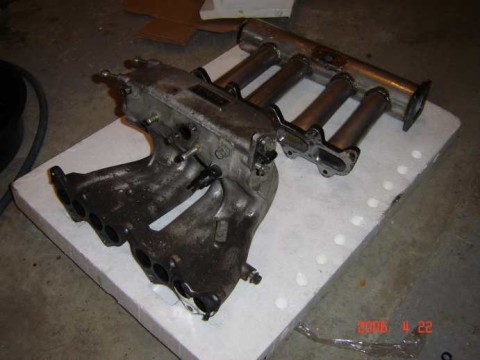
Blue top TVIS manifold vs. mine
Driveshaft
The driveshaft was shortened by joining the front yoke of the front shaft to the rest of the rear shaft. The driveshaft was not balanced, and does not appear to vibrate.
Brakes
The emergency brake cables are run under the axle into the left side of the transmission tunnel and were shortened to fit. I replaced the wretchedly toasted Corolla brakes with new Brembo rotors, and Raybestos semi-metallic pads. When I had to change the front spindles et al, I went with Chevette front brakes. The Raybestos pads were garbage. They didn’t fit right, howled, and were not impressive in the least.
I changed to Porterfield R4-S pads in spring 2007 but while they were certainly better, they were not the Hawk HP+ equivalent I was looking for.
The increase in piston size in the Chevette caliper has upset the brake bias. I’m running a Wilwood proportioning valve, and even adjusted for full rear bias I cannot lock the rear wheels. This will necessitate a change to dual master cylinders and a balance bar. Which will of course require the gutting of the existing pedal box, different pedals, pivots and top-mounted masters. Fun. Should have done that all along….
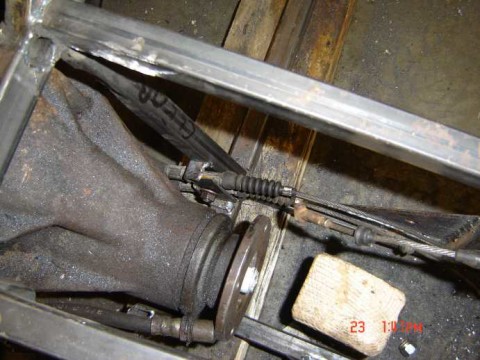
E-brake cable routing. See those tubes? WAY TOO CLOSE!
Fuel and Intake
The fuel cell was purchased from Competition Race Equipment on eBay. 8 gallon, cross-linked polyethylene, with all the hardware. The build quality is nice, but the dimensions are inconsistant (measure ~exactly~ where each tank strap is going to go, and make each tank strap to fit).
I ran a Mr. Gasket low pressure electric pump to a surge tank, which in turn feeds a Ford F-150 high pressure pump to feed the injector rail. This must be done as the fuel tank is un-baffled (and un-baffleable, due to it’s construction material), and I do not want to suffer from fuel starvation mid-corner.
Liam Burr fabricated an aluminum surge tank for me. It is mounted beside the fuel tank.
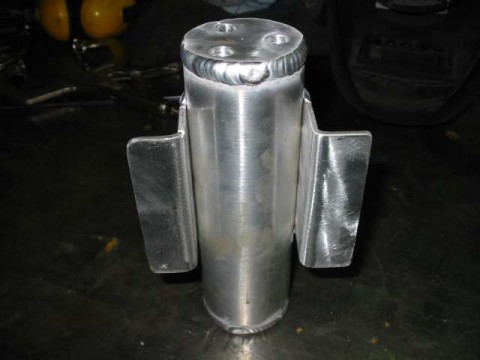
Surge tank by Liam Burr
Having driven the car for a bit, anything less than 1/3 tank will slosh away from the pickup – you can hear the low pressure pump trying to pump air. I have never had the high pressure pump run dry yet. I’d say the system is successful.
One observation is that the car is pretty fun up to 4500rpm, then screams like a banshee right to the 7500rpm full cut, still pulling. It may be a good idea to go MegaSquirt and fiddle with fuel and timing to try and smooth out the power curve (Note: I went Megasquirt with GSXR600 throttle bodies and distributorless ignition in 2009 – see Megassquirt). That, and raise the fuel cut. If I re-do the motor, I’d love to raise the compression and run some Colt Camshafts that reportedly give 25hp at the wheels on an otherwise stock Blue Top 4AGE. Then again a bigger motor might be wiser… (Note: I bought a 2006 Ford 2.0L Duratec in 2008 – stay tuned!)

